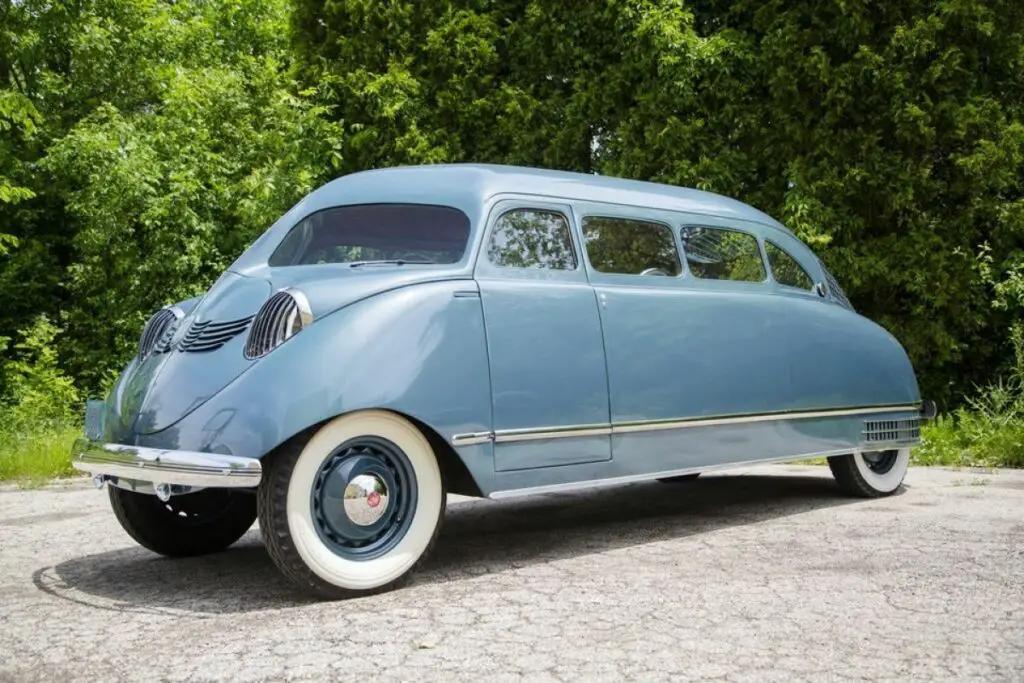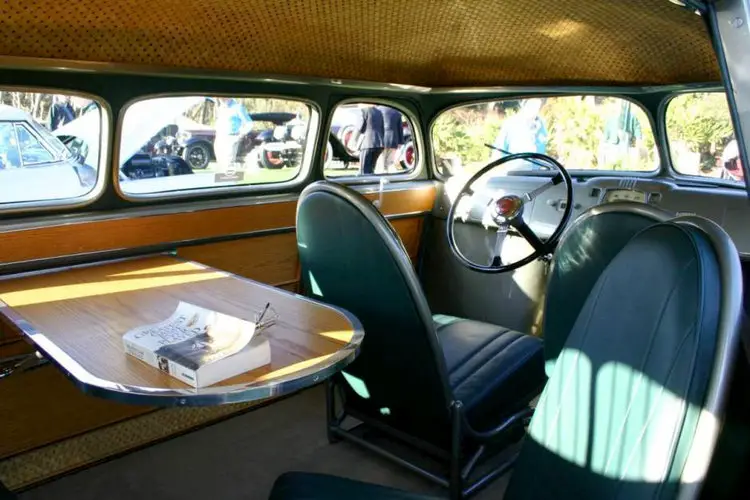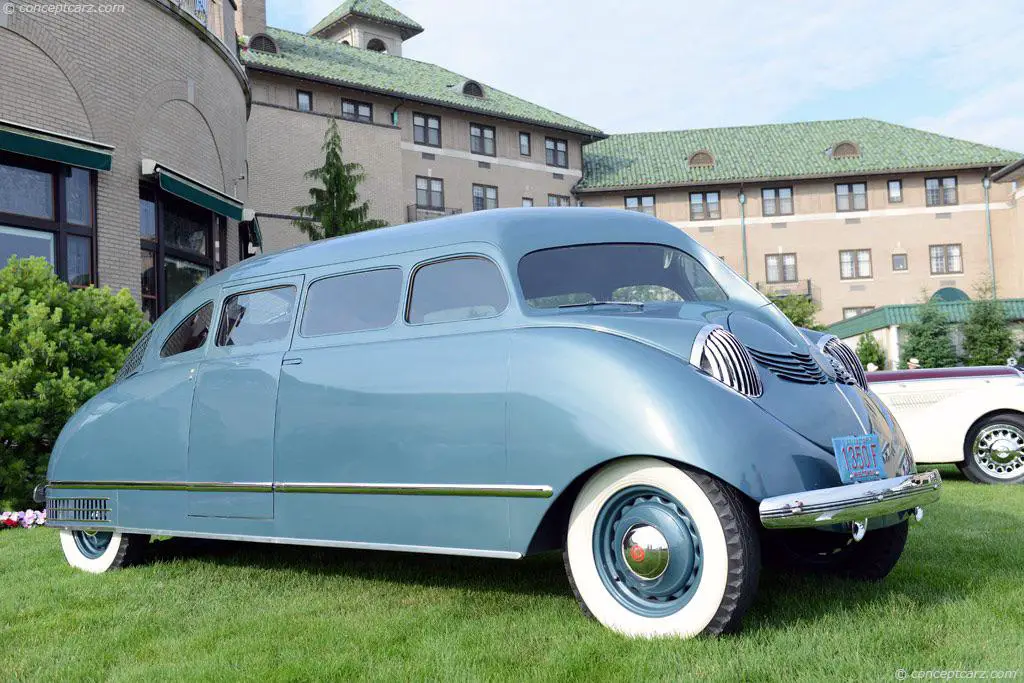Embark on a journey into automotive ingenuity with the 1934 Stout Scarab, a pioneering vehicle designed by the forward-thinking William B. Stout. This unconventional automobile, crafted far ahead of its time, stands as an icon of innovation. The Stout Scarab challenged the traditional notion of vehicle design, pushing the boundaries with its unique and futuristic features, revolutionizing the automotive landscape.
The 1930s marked a significant era in automotive design, a time of cultural and technological transformation. Amidst an evolving landscape, the Stout Scarab emerged, reflecting an era defined by innovation and the exploration of avant-garde design in the automotive industry. It embodied the era’s aspirations for revolutionary concepts and the fusion of technology and artistry in automotive engineering.

Unique Design and Innovations
Futuristic Design
The Stout Scarab boasted groundbreaking and futuristic design elements:
- Streamlined Aesthetics: Its aerodynamic, teardrop-shaped body set new standards, offering improved efficiency and a sleek, avant-garde appearance.
- Minivan-Like Structure: Considered an early minivan, the innovative layout provided a spacious and versatile interior, departing from traditional automobile designs.
Interior Innovation
The car’s interior was a marvel of innovation:
- Versatile Seating Arrangement: Seating configured in a circular pattern fostered a communal atmosphere, redefining the car’s interior for social interaction.
- Integrated Tables and Amenities: Folding tables, a sink, and other integrated amenities made it a mobile office or a comfortable space for social gatherings.
- Driver-Centered Design: A unique design placed the driver at the center, prioritizing comfort and control.
Engineering and Technological Features
Innovative Engineering

The Stout Scarab incorporated innovative engineering methods:
- Flathead Ford V8 Engine: The car was powered by the reliable and efficient Flathead Ford V8 engine, ensuring a balance between power and performance.
- Chassis Design: Its unconventional chassis design and engineering set it apart, focusing on weight distribution for improved handling and stability.
Technological Features
Experimental technology set the Scarab apart from contemporary cars:
- Independent Suspension: An early application of independent suspension enhanced the car’s ride quality and handling, showcasing forward-thinking engineering.
- Aerodynamic Principles: Utilizing aerodynamic principles in its design, the Scarab stood out for its sleek profile and reduced wind resistance.
Performance and Driving Experience
Engine Specifications
The Stout Scarab was equipped with a reliable Ford V8 engine, offering reasonable power and performance for its time. The specifics included an estimated 85 horsepower, providing adequate performance comparable to other vehicles of the era.
Driving Experience
The car’s driving dynamics focused on comfort and handling:
- Comfortable Ride: Its emphasis on comfort was notable, providing a smooth and comfortable ride for both drivers and passengers, challenging the norms of the era.
- Handling Characteristics: Its unique design facilitated stable handling, creating a pleasant driving experience for its occupants.
Public Reception and Testimonials
Historical Reviews

Historical accounts praised the Stout Scarab for its comfort, interior innovation, and unconventional design. Reviews often lauded its forward-thinking approach, standing out for its pioneering design in automotive history.
Notable Appearances
Exhibitions and public appearances of the Stout Scarab captivated audiences. These displays presented a futuristic vehicle ahead of its time, further emphasizing its unique attributes and setting it apart from conventional automobiles.
Influence and Legacy
Impact on Automotive Design
The Stout Scarab’s legacy reverberated through automotive design:
- Influence on Minivans: Its minivan-like structure laid a foundation for future minivan designs, influencing subsequent vehicles in terms of spacious interior layouts and versatile functionality.
- Design Pioneering: The vehicle’s pioneering design concepts, especially in interior layout and ergonomics, inspired future automotive designs and innovation.
Contribution to Car Culture
The Scarab contributed significantly to evolving vehicle design and automotive culture. Its unique design challenged the norms of the time, steering the direction of future vehicle concepts and redefining the expectations of what a car could be.
Rarity and Collectibility
Current Status
The Stout Scarab is a rare gem in automotive history. While documentation regarding its current existence is limited, some may exist in private collections or museums, showcasing its unique legacy.
Collectors’ Interest
Its scarcity and significant role in automotive history make the Stout Scarab highly desirable among car collectors. Its pioneering design and influence on future vehicles elevate its status as a significant piece in the evolution of automotive culture.
The 1934 Stout Scarab’s blend of innovation, driving comfort, and forward-thinking design left an indelible mark on automotive history. Its impact on vehicle design, minivans, and car culture underscores its enduring significance as a pioneering and collectible artifact in the world of automobiles.
Conclusion
The 1934 Stout Scarab, with its innovative design, comfortable ride, and influential legacy, remains a hallmark in automotive history. Praised for its pioneering minivan-like structure, it challenged conventions of its time, leaving an enduring impact on automotive design.
Historical reviews celebrated its futuristic approach, and its rare existence today continues to captivate collectors, cementing its status as a revered symbol of automotive innovation, offering a glimpse into the evolution of vehicle design and cultural influence.
